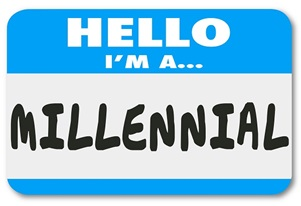ATD Blog
7 Myths About Millennials
Fri Sep 25 2015

Millennials, the generation born between 1978 and 2000, number 95 million in the United States. They are often the subject of extensive media attention detailing how different they are than previous generations. (And those differences are usually perceived as negative.) So, how accurate are some of these perceptions: Are they myth or reality?
Myth 1: Millennials Are a Homogeneous Group
Reality: Cultural, socioeconomic, and other factors belie this assumption. Around the globe, factors that shape this younger generation are profoundly different: There are those struggling in war-torn areas such as Syria, Nigeria, Sierra Leone, and Ethiopia. China’s one child policy creates expectations from parents that their child should succeed. High unemployment rates in countries such as Spain and Greece are stifling the potential of young people.
There are more similarities between Millennials in the United States, Canada, and Western Europe than those in countries with emerging economies, but there are considerable differences and disparities, too. In the United States, for example, young African Americans and Latinas have disproportionally high poverty rates and unemployment.
Myth 2: Millennials Identify as a Cohort
Reality: According to a recent Pew Research study, despite extensive media focus and the fact that they are now the largest group of employees in the workforce, Millennials are less likely to view themselves as part of a generation than members of Gen X or Baby Boomers.
Myth 3: Millennials Are More Idealistic and Environmentally Conscious
Reality: Millennials are evenly matched with Baby Boomers on those values, according to the same Pew Research study.
Myth 4: Millennials Expect to be Promoted Instantly
Reality: A more pressing concern is that they believe they aren’t able to fully contribute. According to The Deloitte Millennial Survey 2015, only a small minority (28 percent) think their current organizations are making full use of their skill set; this perception is lowest in Japan (9 percent), perhaps reflecting the country’s aging population and limited career options. Moreover, only 24 percent of Millennials felt that leadership was a strong personal trait upon graduation, suggesting that they are self-critical.
Myth 5: Millennials Are Entitled
Reality: As a generation that came of age during multiple economic recessions, massive social change, and political upheaval, young people are more likely to be particularly sensitive to the lack of job security, and therefore do not feel that they are owed something. However, having seen the employer/employee contract unravel thanks to extensive restructuring and downsizing, Millennials may be less likely to make sacrifices for organizations if they think their commitment and loyalty won’t be returned.
Myth 6: Millennials Are More Focused on Work Flexibility
Reality: Research demonstrates that the desire for greater flexibility is shared across age groups, but Millennials are most likely to believe they should be rewarded on the basis of output and results, rather than just hours worked.
Myth 7: Millennials Are Only Interested in Virtual Communication, Having Grown Up as "Digital Natives"
Reality: While Millennials were the first generation to come of age with such a vast array of communication vehicles—including text messaging, snapchat, e-mail, and FaceTime—and are comfortable with all, they still value teamwork and engaging in face-to-face performance discussions.
A recent video from Mercer poses the question, "Is your organization ready?"
Given the changing demographics, with a rapidly aging workforce in developed countries, it is important that all organizations discover how to fully utilize the talents of all employees, across all generations. With the skill shortages faced by companies today, it is imperative to stay committed to employee engagement, but “one-size-fits-all” solutions will not work.
How does your organization view Millennials? Are special programs offered to attract, retain, and develop them, and if so, how effective are they?
